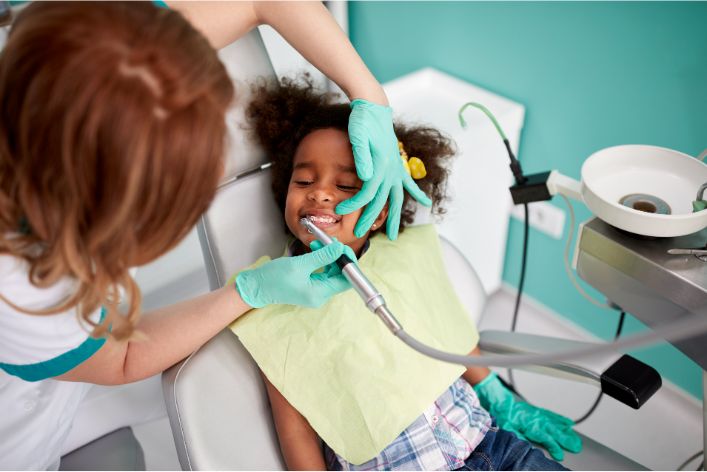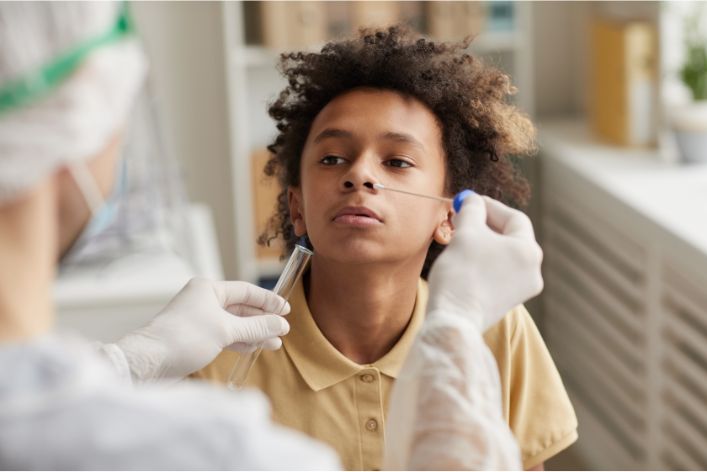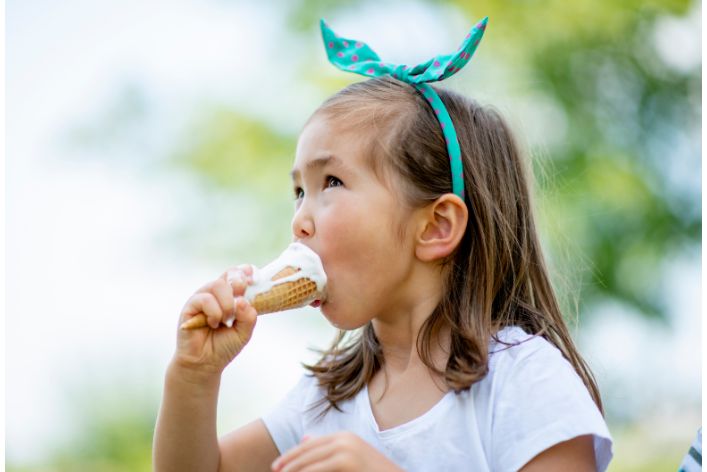Introduction
Proper hygiene practices are crucial for ensuring good health in children. They help prevent the spread of diseases and reduce the risk of infection. The Guidelines on Hygiene Practices for Child Health provide valuable information on how to maintain cleanliness and promote healthy habits.
The guidelines are designed to help parents, caregivers, and educators understand the importance of hygiene practices in maintaining good health. They provide an overview of the best practices for keeping children safe from illness and disease.
Hand Hygiene
Hand hygiene is one of the most essential practices for child health. Clean hands can reduce the spread of infections and diseases among children.
Therefore, it is crucial to teach children proper handwashing techniques and when to wash their hands. Here are some guidelines to follow:
Proper Handwashing Techniques
- Wet hands under clean, running water.
- Apply soap and rub hands together to lather for at least 20 seconds.
- Scrub all surfaces of hands, including the backs of hands, between fingers, and under nails.
- Rinse hands under clean, running water.
- Dry hands with a clean towel or air dry them.
Note that hand sanitizers are not a substitute for handwashing. Soap and water are always preferred when hands are visibly dirty or contaminated.
When to Wash Hands
- Before and after preparing or eating food
- After using the toilet or changing a diaper
- Before and after caring for someone who is sick
- After blowing your nose, coughing, or sneezing
- After touching an animal, animal feed, or animal waste
- After handling garbage
Teach children to wash their hands often and to avoid touching their nose, mouth, or eyes with their hands to prevent the spread of germs.
Alternative Options for Hand Hygiene (Hand Sanitizer)
If soap and water are not available, hand sanitizer can be used as an alternative. However, it is important to select a hand sanitizer that contains at least 60% alcohol.
Here are some guidelines to follow:
- Apply hand sanitizer to the palm of one hand.
- Rub hands together, covering all surfaces of hands, until hands are dry.
- Do not rinse or wipe off hand sanitizer before it has dried.
It is important to note that hand sanitizer is not effective on visibly dirty or greasy hands. In these situations, handwashing should always be the preferred method of hand hygiene.
Essentially, practicing good hand hygiene is essential for maintaining child health. Proper handwashing techniques, knowing when to wash hands, and alternative options for hand hygiene such as hand sanitizer are all crucial components of a healthy hygiene routine.
Read: Strategies for Preventing Childhood Diseases in Nigeria
Oral Hygiene
Good oral hygiene practices are a crucial aspect of a child’s overall health. Poor oral hygiene can lead to several dental problems and, in extreme cases, affect other parts of the body.
Here are the guidelines that parents should follow in regard to oral hygiene:
Brushing Teeth
- Parents should ensure that their children brush their teeth twice daily, preferably with fluoride toothpaste.
- Children should use a toothbrush with soft bristles to avoid damaging their teeth and gums.
- A pea-sized amount of toothpaste is enough for children under 6 years old – too much toothpaste can cause fluorosis.
- Children should brush their teeth for at least two minutes, covering all the surfaces of their teeth.
- It is recommended that parents supervise their children’s brushing until they are 7 or 8 years old.
- Children should change their toothbrushes regularly, preferably every three to four months, or sooner if the bristles become frayed.
- Teach children to brush their tongues gently to get rid of any bacteria that may cause bad breath.
Flossing
- Parents should introduce flossing to their children as soon as any two teeth touch, usually around the age of 2 to 3 years.
- Children should use a piece of floss about 18 inches long, wrapping the ends around their middle fingers and holding it tightly with their thumbs and index fingers.
- Teach children to slide the floss between their teeth and move it back and forth gently to clean the sides and just below the gum line.
- Children should use a fresh section of floss for each tooth.
- Parents should supervise their children’s flossing until they are 7 or 8 years old.
- Children with braces or other dental appliances may require special flossing instructions from their dentist.
Visiting the Dentist Regularly
- Parents should take their child to the dentist for check-ups at least twice a year or as recommended by their dentist.
- A professional dental cleaning every six months can help prevent dental problems and keep teeth healthy.
- The dentist can also provide further instructions on oral hygiene practices, diet, and cavity prevention.
- If a child experiences any dental pain or unusual symptoms, parents should take them to the dentist immediately.
- Children who require extensive dental work or have dental anxiety may benefit from a pediatric dentist who specializes in treating children.
Good oral hygiene practices are essential for children’s dental health. Parents should lead by example and make sure their children develop healthy oral habits early on. It’s never too early to start teaching children about good oral hygiene practices, and regular visits to the dentist can help prevent dental problems and keep their smiles healthy and bright!
Read: Improving Child Mental Health through Nutrition

Bathing and Showering
Bathing and showering are essential parts of maintaining good hygiene practices for child health. However, it is important to follow proper techniques to ensure that children are clean and safe.
Parenting Made Just for You
Get personalized Parenting Solutions tailored to your child’s needs. Transform your parenting journey with expert guidance in 1-3 days.
Get StartedHow Often to Bathe/Shower Children
- Newborns do not need to be bathed every day. It is enough to wipe their face, neck, hands, and diaper area with a warm washcloth.
- Babies aged 3-6 months can be bathed two to three times a week. Using a gentle baby soap is recommended.
- Parents can bathe toddlers and young children once a day or every other day, considering their activity level and outdoor playtime.
Proper Bathing and Showering Techniques
- Fill the tub with warm (not hot) water. Test the water temperature with your elbow or wrist before putting your child in the tub.
- Use a gentle baby soap or a soap-free cleanser and a soft washcloth or sponge to clean your child’s body.
- Wash your child’s scalp and hair with a mild shampoo, and rinse thoroughly to avoid leaving any soap residue that can irritate the skin.
- Encourage your child to wash themselves under your supervision. Teach them to wash themselves from top to bottom, front to back.
- Use a soft towel to pat your child dry. Avoid rubbing, which can irritate the skin.
Use of Soap and Shampoo
- When selecting soap or shampoo for your child, choose products that are mild, fragrance-free, and hypoallergenic to reduce the risk of skin irritation or allergic reactions.
- Avoid using adult or scented products on children, as they can be harsh and irritate the skin.
- Use only a small amount of soap or shampoo, and rinse thoroughly to avoid leaving any residue that can cause dryness or irritation.
- If your child has sensitive skin or a history of eczema, talk to your pediatrician about using a special soap or shampoo.
Bathing and showering are important hygiene practices that can help keep children healthy and comfortable. By following these simple guidelines, parents can ensure that their children are clean and safe.
Read: Coping with Childhood Obesity: A Guide for Parents
Proper use and Disposal of Diapers
Diapers are an essential item for child care, but if not used and disposed of properly, they can be a source of infection and contamination.
Here are some guidelines to follow:
Changing Diapers Frequently
- Check and change diapers every 2 to 3 hours, or more often if needed.
- Avoid leaving a diaper on for too long as it may cause diaper rash or UTI.
- Always wash your hands before and after changing diapers to prevent the spread of germs.
Proper Diapering Techniques
- Place the child on a clean and flat surface to change the diaper.
- Clean the child’s bottom gently using wipes or a clean cloth soaked in warm water.
- If the diaper area is red or irritated, apply a diaper rash cream or ointment.
- Make sure the diaper is snug but not too tight to avoid leaks or discomfort.
Disposal of used Diapers
- Wrap the used diaper tightly and securely in a plastic bag before disposal.
- Dispose of the used diaper in a trash bin with a lid to prevent the spread of germs and odors.
- Do not flush the diaper down the toilet as it can cause clogs and damage to the plumbing system.
- If possible, consider using eco-friendly diapers and dispose of them in a compost bin instead of a landfill.
By following these guidelines, you can help ensure a safe and hygienic environment for your child.
Read: Solutions for Common Child Health Issues in Nigeria
Food Hygiene
Food hygiene is important for child health. Proper storage and handling of food can prevent contamination. Safe food preparation techniques should also be followed.
When preparing meals for children, it is crucial to make sure that all food is stored properly. This means keeping perishables in the refrigerator or freezer and storing non-perishables in a cool, dry place.
When handling food, it is important to wash your hands thoroughly before and after touching any food items. Additionally, any surfaces that come into contact with food should be cleaned and disinfected regularly.
Safe food preparation techniques can help prevent contamination. When cooking meat, make sure that it is cooked thoroughly to kill any bacteria that may be present. It is also important to use separate cutting boards and utensils for different types of food.
Cross-contamination can occur when different types of food come into contact with each other. To avoid this, it is important to keep raw meat and poultry away from ready-to-eat foods.
Additionally, any surfaces that come into contact with raw meat should be cleaned and disinfected thoroughly.
When cooking for children, it is also important to avoid certain foods that may pose a higher risk of contamination. These include raw or undercooked meat, raw or undercooked eggs, unpasteurized dairy products, and raw sprouts.
In addition to these guidelines, it is important to always follow the individual instructions for food preparation and storage. Paying careful attention to these details can help prevent foodborne illnesses and keep children healthy.
Unveil the Perfect Name that Tells Your Family's Story
Let us help you find a name that embodies your family's values, traditions, and dreams. Our personalized consultation weaves cultural insights to create a name that's uniquely yours.
Get StartedProper food hygiene is important not just for child health, but for everyone’s health. By following these guidelines, we can help ensure that our food is safe to eat and prevent the spread of illness.
Read: Safeguarding Child Health with Clean Water & Sanitation
Cleaning and Disinfecting
Keeping the home clean is essential in maintaining good hygiene practices for children. The environment that surrounds them can harbor bacteria and germs that can cause diseases, and cleanliness is the first line of defense.
Here are some guidelines to follow:
Regular Cleaning of the Home
- Regular cleaning of the home should be done daily to minimize germs and bacteria.
- All surfaces, including floors, walls, and furniture, should be wiped down with a cleaning solution.
- Avoid using feather dusters or dry cloths that can scatter dust and germs into the air. Instead, use a damp cloth to wipe surfaces down properly.
Proper Disinfecting Techniques
- You should disinfect frequently touched surfaces like doorknobs, light switches, and countertops weekly.
- Use a disinfectant solution and allow it to sit on surfaces for the recommended time to kill germs effectively.
- Pay extra attention to bathrooms and kitchen areas, where germs can thrive and spread.
Use of Safe and Child-Friendly Cleaning Products
- Always read the label before purchasing cleaning products and ensure that they are safe for children.
- Avoid using harsh chemicals or bleach-based products that can cause skin irritation or harm when ingested.
- Consider using child-friendly cleaning products, such as non-toxic and natural solutions, to lessen the risks of exposure to harmful chemicals.
Remember that regular cleaning and disinfecting techniques are not only beneficial for children’s health but also for the rest of the family. Maintaining a clean and germ-free environment is essential to prevent the spread of diseases and infections. Teach children proper hygiene practices and involve them in cleaning tasks to instill good habits early on.
Basically, a clean environment is conducive to a healthy and happy childhood. Following these guidelines will help ensure that your home is hygienic and safe for every member of the family.
Read: How to Manage Picky Eating Among Nigerian Children
Conclusion
The importance of hygiene practices for child health cannot be overstated. Keeping children clean and healthy is crucial to their development and well-being.
We encourage everyone to follow the guidelines presented in this article to ensure the best possible health outcomes for children. Simple practices such as handwashing, maintaining clean living spaces, and practicing proper food safety can make a significant difference in preventing the spread of illnesses and infections.
It is important to remember that promoting good hygiene isn’t just a matter of personal health; it also helps to protect communities from the spread of disease. By taking the necessary steps to keep our children healthy, we are also contributing to a healthier and safer environment for all!




